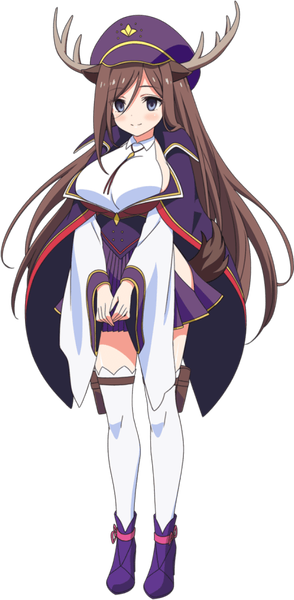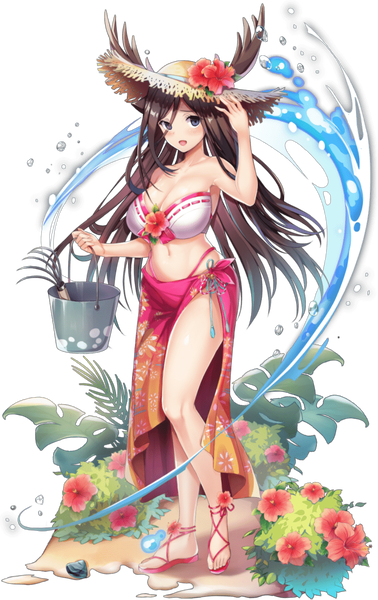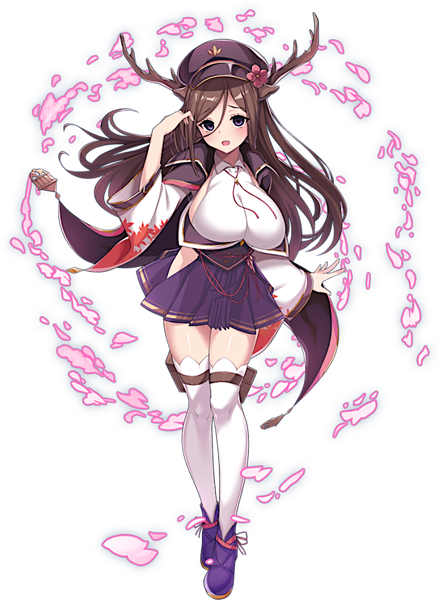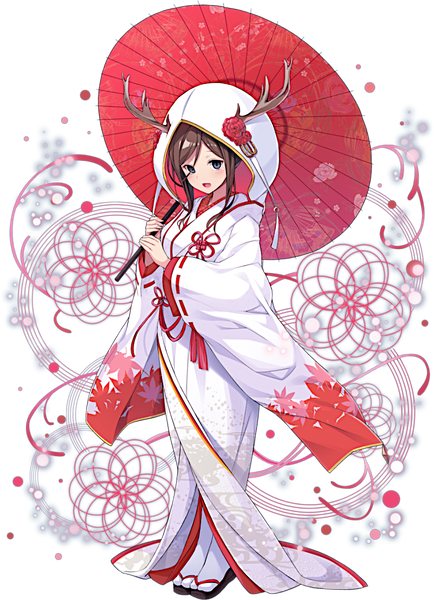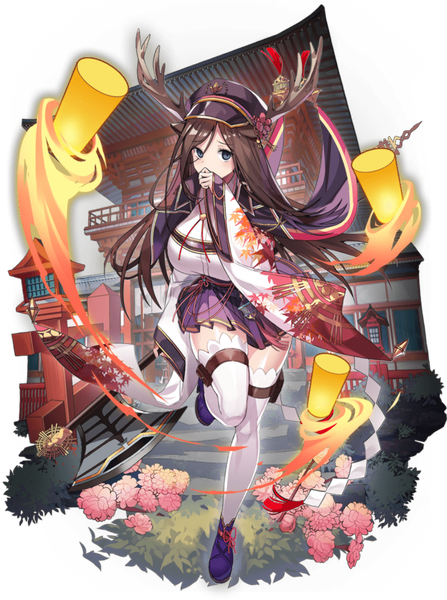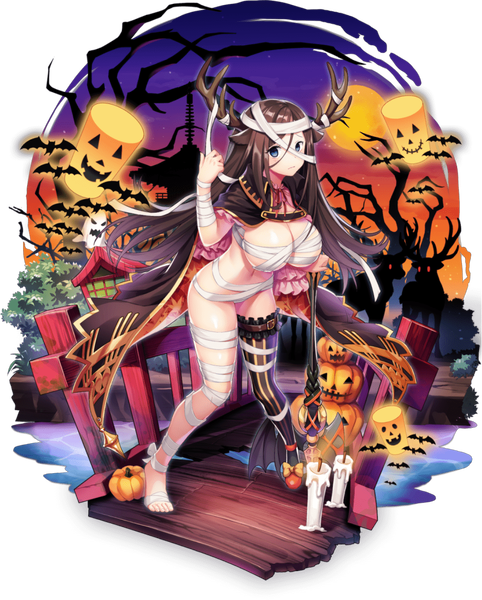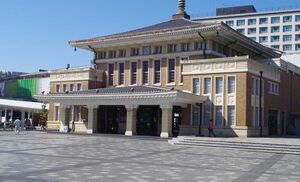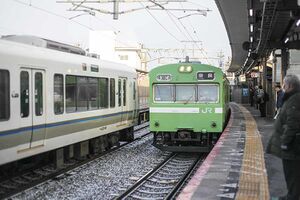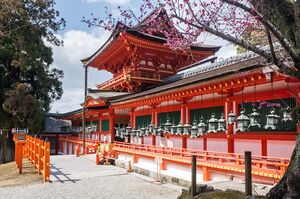Nara
| Nara | |||||
|---|---|---|---|---|---|
| Japanese Name | ナラ | ||||
| Weapon | |||||
| Race | Beast | ||||
| Nationality | |||||
| Birthday | December 27 | ||||
| Constellation | Capricorn | ||||
| Talents | Able to make her surroundings fertile and make grass and flowers sprout | ||||
| Likes | Warabimochi, Senbei | ||||
| Dislikes | Socializing with others, Salt (especially saltwater) | ||||
| Strengths | Laid-back, calm and reassuring to those around her | ||||
| Weaknesses | Not the best at communicating with others | ||||
| Hobbies | Zen meditation, Sunbathing | ||||
They call me Nara, and I'm am a nun who trained quietly up on a mountain in Nishiki. It's an obscure location that doesn't even compare to where Ooe-san's place is, but there was a temple there. Hmm, the temple is closed now, though... but it was really a prestigious temple for its time, so... Oh, oh dear, this is a mess! I think I should've prepared more of what I wanted to say beforehand first!?
Layers
| Icon | Title | Release Date | Where to Obtain |
|---|---|---|---|
| [Laid-Back Nun] Nara | 2021 December 22 (EN) | [Altar of Judgement - Holiday Rat] Event Reward | |
| [Open-Minded for Just a Little] Nara | 2021 July 16 | [Dripping-Wet Loyal Dog Knight] Limited Gacha | |
| [Unleashed Anxiety] Nara | 2023 February 22 | [Sharp-Tongued Maid and the Female Pirate] Limited Gacha | |
| [Dressed in Pure White] Nara | 2023 June 1 | [Wedding Bouquet for the Immortals] Event Reward | |
| [Fertility Curse] Nara | 2021 December 22 (EN) | [Relaxing Rebirth in Paradise] Limited Gacha | |
| [Comfy Mummy] Nara | 2021 October 31 | [Halloween Pumpkin's Rebellion] Limited Gacha |
Owned Skills
Trivia
- Nara's birthday is the opening date of Nara Station in 1890.
- Nara's beast motif is the sika deer. The sika deer (Cervus nippon), also known as the spotted deer or the Japanese deer, is a species of deer native to much of East Asia and introduced to other parts of the world. It is now uncommon except in Japan, where the species is overabundant.
- Warabimochi (蕨餅) is a Japanese confection made from warabiko (bracken starch) and covered or dipped in sweet toasted soybean flour. It differs from true mochi made from glutinous rice. It is popular in the summertime, especially in the Kansai region and Okinawa, and often sold from trucks.
- Senbei (煎餅) are a type of Japanese rice cracker. They come in various shapes, sizes, and flavors, usually savory but sometimes sweet. Senbei are often eaten with green tea as a casual snack and offered to visiting house guests as a courtesy refreshment.
- The "antlers" on Nara's head are not horns, but stated as living tree branches in the dialogues of [Laid-Back Nun] (Note that only sika stags have antlers).
- The building in the background of [Fertility Curse] is the Kasuga Grand Shrine, located inside Nara Park. Deer freely roam inside this park and are considered sacred. It is illegal to injure or kill any sika deer in the region of Nara.
- The lanterns in the background of [Fertility Curse], and the victory animation of [Laid-Back Nun] are lanterns also used in the annual Nara Lantern Festival.
- The motif design of the axe that Nara uses references the appearance of Tōdai-ji shrine.
- Akira (日日日) is the author of the storyline of Mist Train Girls and is born in the region of Nara. Nara is also designed by Akira.
- Nara's dislike of salt is ironically contradictory - salt is needed by deer to assist with digestion, making it necessary for survival.
Counterpart
Nara Station (奈良駅) is a railway station located in Nara, Japan. Operated by West Japan Railway Company (JR West), it is the main stop in the city of Nara on the Kansai Main Line (Yamatoji Line), the terminus for the Sakurai Line (Man-yō Mahoroba Line), and Nara Line trains for Kyoto begin here and run on the Kansai Line to Kizu before diverging. Also, a limited number of Gakkentoshi Line trains terminate here via Kizu during early mornings and late nights. Yamatoji Line trains from Ōsaka and JR Namba continue past here to Kamo.
Nara station is the central station of JR in the city of Nara, with many trains departing for Kyoto and Tennoji. This station has three elevated island platforms serving five tracks. Nara station has been selected as one of the 100 best stations in Kinki. Along with the land readjustment project around the station, which was carried out in conjunction with the 1300th anniversary of the relocation of Heijo in 2010, an elevated project was carried out at this station, and it departed from the ground platform until the end on March 13, the same year. The Sakurai Line was elevated.
Nara station was originally opened alongside the opening of the Osaka Main Line on December 27, 1890. This line is later merged to the Kansai Main Line alongside the Nara Main Line and becomes a national railway station on 1907. This station was damaged by air raids of World War 2 on July 22, 1945. By April 1987, Nara station is absorbed into West Japan Railway Company (JR West) due to the privatization of JNR ever since. Wikipedia
Nara Park (奈良公園, Nara Kōen) is a public park located in the city of Nara, Japan, at the foot of Mount Wakakusa. Established in 1880 it is one of the oldest parks in Japan. Administratively, the park is under the control of Nara Prefecture. The park is one of the "Places of Scenic Beauty" designated by the Ministry of Education, Culture, Sports, Science and Technology (MEXT). Over 1,200 wild sika deer (シカ/鹿) freely roaming around in the park are also under designation of MEXT, classified as natural treasure. While the official size of the park is about 502 hectares (1,240 acres), the area including the grounds of Tōdai-ji, Kōfuku-ji, and Kasuga Shrine, which are either on the edge or surrounded by Nara Park, is as large as 660 hectares (1,600 acres).
According to local folklore, sika deer from this area were considered sacred due to a visit from Takemikazuchi, one of the four gods of Kasuga Shrine. He was said to have been invited from Kashima Shrine in present-day Ibaraki Prefecture, and appeared on Mount Mikasa (also known as Mount Wakakusa) riding a white deer. From that point, the deer were considered divine and sacred by both Kasuga Shrine and Kōfuku-ji. Killing one of these sacred deer was a capital offense punishable by death up until 1637, the last recorded date of a breach of that law. Wikipedia
Map
Gallery
- Pages using Tabber parser tag
- Pages using DynamicPageList3 parser tag
- Weapon Axe
- Beast
- Nishiki
- Capricorn
- Element Cut
- Element Fire
- Element Wind
- Element Light
- Train Knights
- Japan

